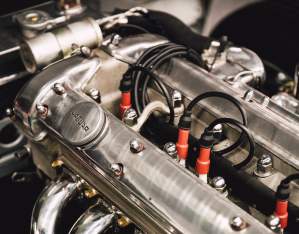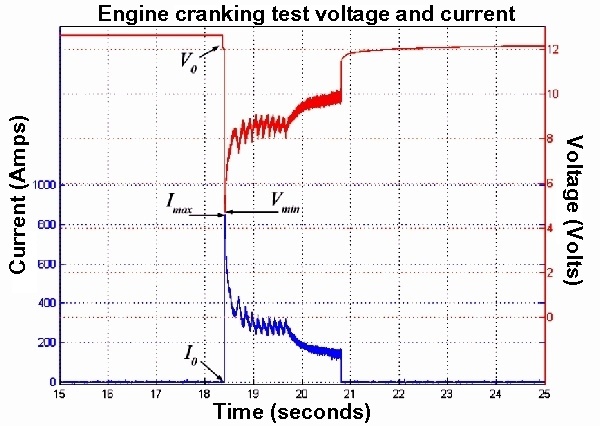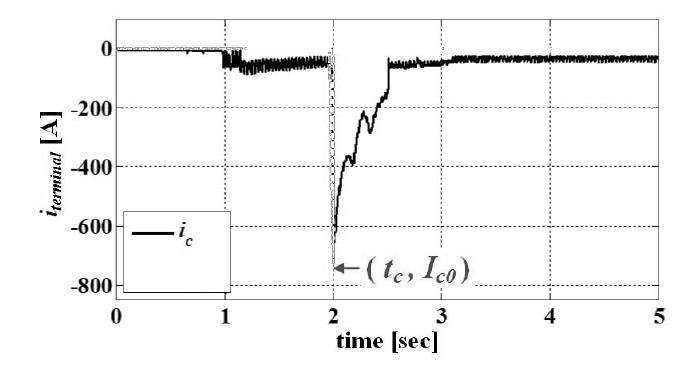| June 15, 2023 | |||
Battery voltage sag during engine cranking |
|||
Below is a graph showing the voltage and current of a SLI battery during engine cranking. It was taken by Christopher Suozzo for his Master's Thesis at Ohio State University. The battery was charged to 75% and left to rest until the open circuit voltage was 12.7 volts. The engine is a 4-cylinder Diesel engine, which due to its high compression ratio, requires higher current than a gasoline engine. The engine was cranked for about 2.4 seconds.  Several interesting features can be seen here. When first energized the motor is stalled, and the field coils need to be energized. This allows over 650 amps to flow into the motor. It is higher than the current in a locked-rotor condition as the magnetic field builds up. As the motor starts to rotate the current quickly drops to about 400 amps. The current then pulses, reaching a peak every time one of the cylinders reaches top dead center under compression. As the engine begins to fire the speed increases and the current drops until the starting motor is disconnected from the battery. The total current drawn can be estimated to about 0.25 amp-hours. The open circuit voltage is about 12V after 4 seconds, and climbing as the battery is resting. The open circuit voltage will continue to climb until it gets back to about 12.7 volts, since the battery charge is still about 75%, having only lost a quarter of an amp hour during the cranking. This final voltage could take several days to reach. At the peak current draw the motor is consuming about 3000 watts. During the actual engine turning the starting motor is consuming about 3200 watts. The battery voltage mirrors the current during the test. At first it drops to about 4.2V, then recovers to about 8V during the actual cranking. By the time the engine is running it gets up to 10V. The total resistance of the system, including battery internal resistance, wire, solenoid and starting motor is about 0.01 ohms. If the battery is charged from a small, 80 Amp alternator it would take 11 seconds to replace the charge that was consumed. Here is another curve of a small 4-cylinder gasoline engine. It catches after only 2.5 top-dead-center compression strokes:  Still the peak current is around 750 Amps. We don't have the voltage curve for this, but we can estimate about 3000 joules, or 0.8 watt-hours. Solution to voltage sag during engine startingPowerStream has developed a series of battery-backups and battery-backup controllers that allow a load such as a computer or video system to switch over to an auxiliary battery during drop-outs or brown-outs to prevent drop-out or rebooting. These can be found in our automotive product directory.https://www.powerstream.com/vp.htmReference: Lead-Acid Battery Aging and State of Health Diagnosis Christopher Suozzo, Ohio State University, 2008. |
|
|
|
| |||||||||